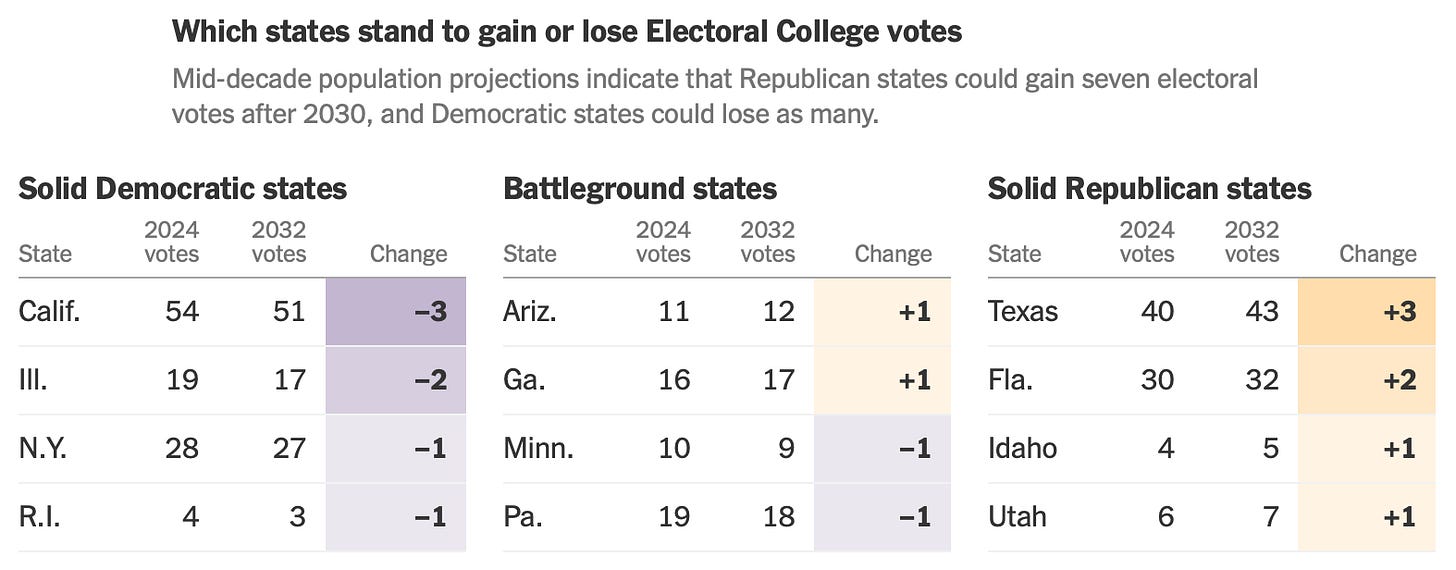Not even the Blue Wall might save Dems in 2032
Texas maps official, redistricting retribution, the center isn’t what you think, 76% reject Cracker Barrel rebrand, Harris voters icing Trump-voting family members, high turnout = Dems lose
No. 373 | August 29th, 2025
👫 Demographics
With red states expected to gain 7 congressional seats after the 2030 Census and blue states projected to lose that amount, the Electoral College will likely tilt away from Democrats in the next decade. If this comes to pass, the Democrats could win every Blue Wall state and still lose.
Yes, but… Projections made in the 2010s about 2020 didn’t hold up perfectly. The lineup of red, blue, and battleground states might change. And the red lean of the Electoral College was even bigger in 2016 and 2020 than it would be under such a map.
🗺 Redistricting
Texas’ new Congressional maps are now in place. DecisionDeskHQ has a breakdown of the seats Republicans are looking to flip.
Keep reading with a 7-day free trial
Subscribe to The Intersection to keep reading this post and get 7 days of free access to the full post archives.



